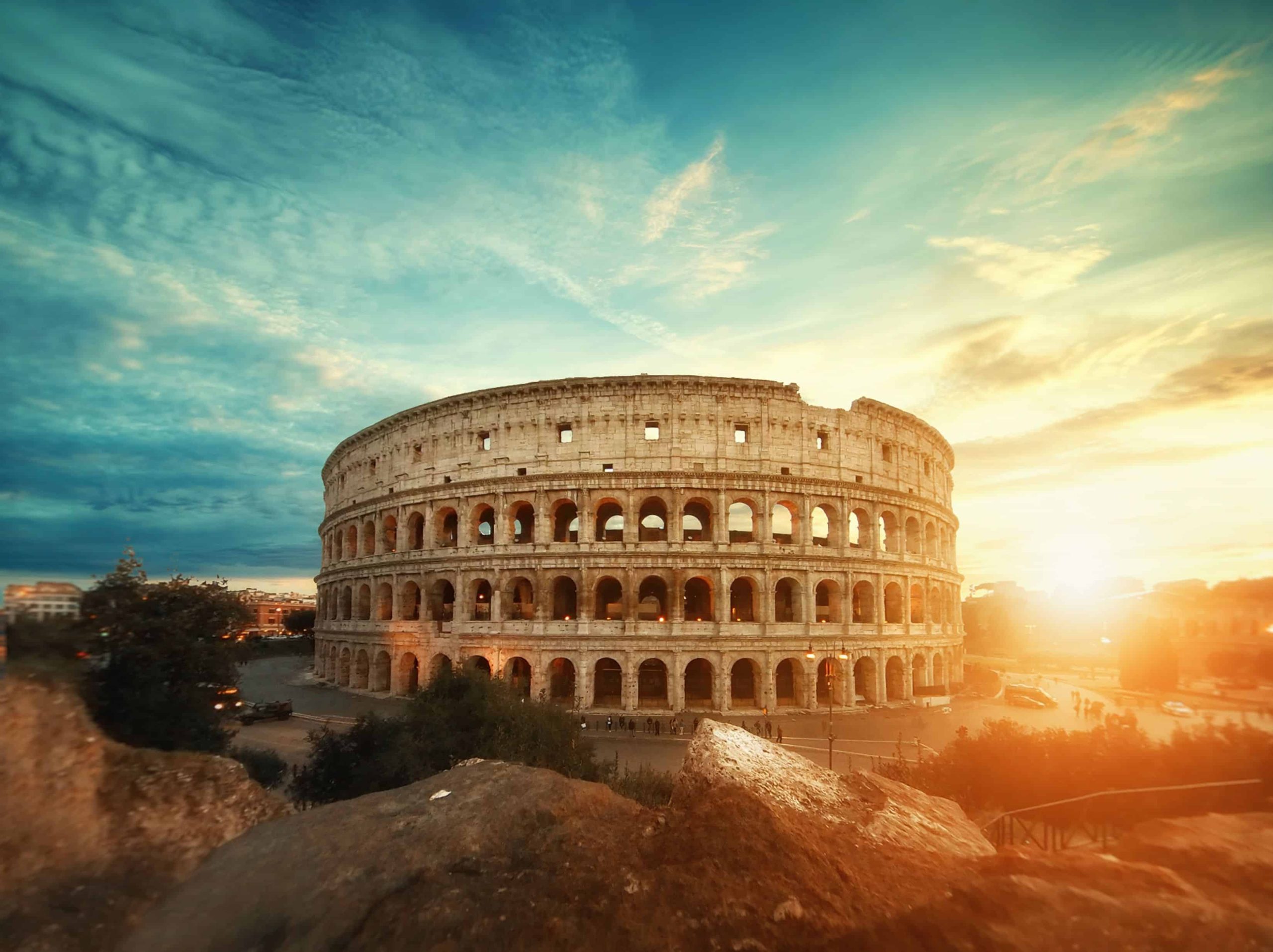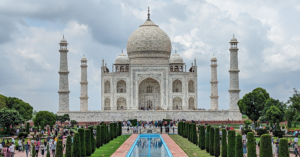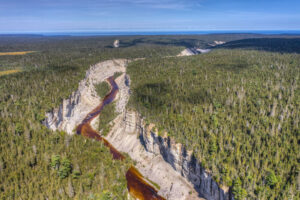Best of the best. Crème de la crème. Ranging from national parks, masterpieces of creative genius, ancient architecture, to whole cities—UNESCO World Heritage Sites take us on a journey back in time to the most significant legacies of humankind and Mother Earth.
Can you think of a better place to visit than the most exceptional examples of our shared human heritage? We often spot good prices to countries where you can find these exciting sites on our cheap flight deals page.
Since I love visiting UNESCO World Heritage sites, I wanted to share this list to inspire you.
UNESCO World Heritage Site basics
By the way, you might be asking yourself this question: how does a place become a UNESCO World Heritage Site?
For a place to be recognized by UNESCO, it has to be of outstanding cultural, historical, or physical significance and meet at least one of the ten criteria. They are classified as natural or cultural (or sometimes mixed).
I often research UNESCO-protected sites when planning upcoming trips and try to visit as many as I can. If you want to play around and do your research, I suggest using the official interactive UNESCO World Heritage Sites Map. You can search for specific sites, or filter the list below the map by countries, regions, or categories.
List of 15 countries that have the most UNESCO World Heritage Sites
Here are the countries and some of the most interesting sites in these countries.
1. Italy (59 UNESCO World Heritage Sites)
Italy—the home to the Roman Empire and the Renaissance—unsurprisingly takes the crown as the country with the most UNESCO sites, tied with the next country. There are 55 sites, 53 of them are cultural, and 6 are natural.
- Number of sites: 55
- Cultural: 53
- Natural: 6
- Mixed: 0
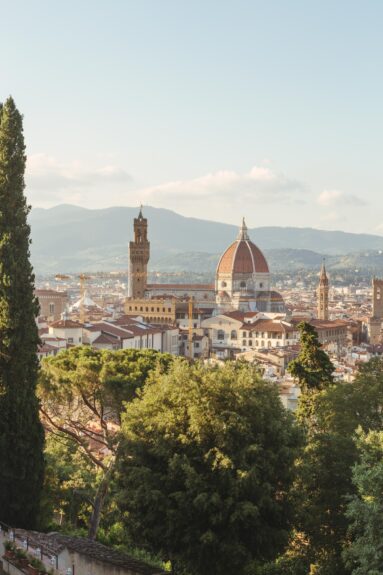
Some UNESCO sites in Italy
Here are a few Italian sites on UNESCO’s World Heritage List:
- Historic center of Florence
Home to many crucial art and literature figures like Leonardo da Vinci, Michelangelo, Boccaccio, and Petrarch, Florence is practically a living museum of the European and Italian cultures.
- Archaeological areas of Pompeii, Herculaneum, and Torre Annunziata
This site consists of what’s left of the ancient towns of Pompei and Herculaneum after the eruption of Vesuvius in 79 AD. The remains’ fundamental value was the unparalleled insight they portrayed into Roman society and everyday life at that time.
- Historic center of Rome
All within the city walls of Rome is UNESCO-protected property. The main attractions include the Colosseum (one of the New 7 Wonders of the World), Fontana di Trevi, the Roman Forum, the Mausoleums of Augustus and Hadrian, the Pantheon, and the Column of Marcus Aurelius. I loved walking around Rome.
- Dolomites mountain range
It consists of 18 peaks and features the most beautiful mountain landscapes on Earth.
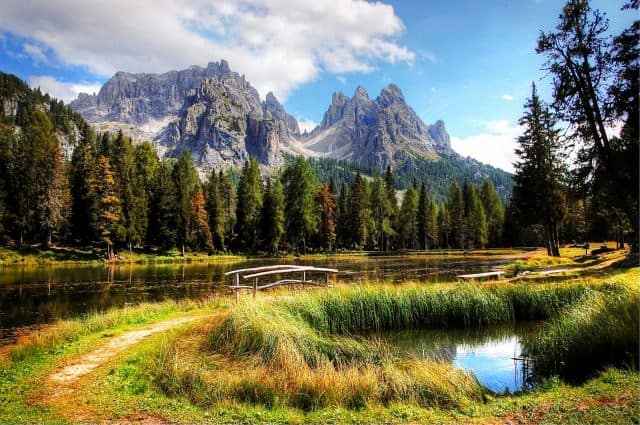
Travels in Italy
I try to visit mostly cheaper, less touristy countries personally, so I haven’t really visited Italy yet. But of course, Italy is one of the most popular destinations, with a lot to offer.
I spent a full day in Rome during a long stopover and loved it. By the way, long stopovers are great if you like to travel, contrary to what many people seem to think who complain about them… seriously, there are worse things than having to spend a day exploring Rome like I did, aren’t there? It’s all about discovering new places.
Especially when, as in this case, the long layover of the deal means that the plane ticket costs less on top of that (so more money to travel more). My ticket from Montreal to South Africa with a long stopover in Rome cost me only $550 roundtrip instead of $1,000 or more!
In short, Rome is a very pretty city to explore. Sure, one day isn’t enough, but it’s infinitely better than not going at all!
2. China (57 UNESCO World Heritage Sites)
Cradle of one of the world’s oldest civilizations, iconic China has many exceptional places on its enormous territory, which is actually bigger than Canada if you really count just dry land (excluding the water surface).
- Number of sites: 57
- Cultural: 39
- Natural: 14
- Mixed: 4
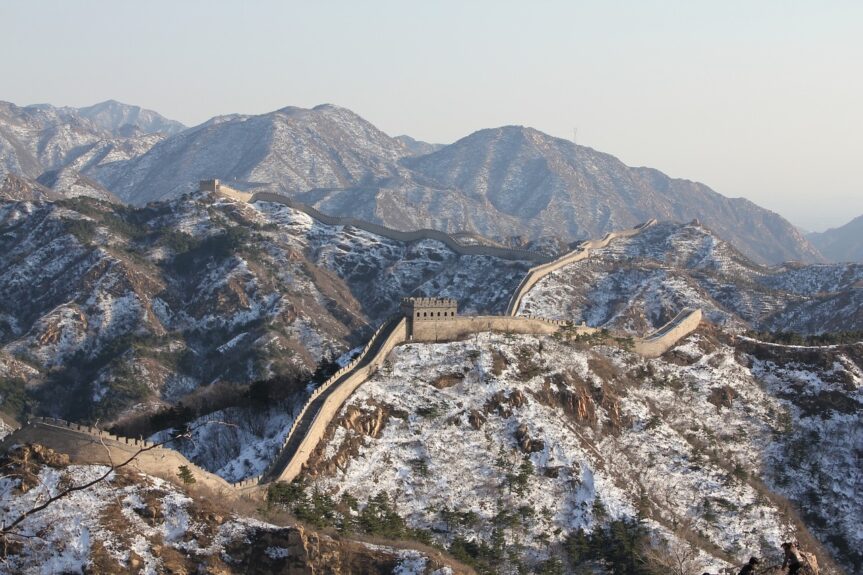
Some UNESCO sites in China
Here are a few Chinese sites on UNESCO’s World Heritage List:
- Great Wall of China
Considered one of the New 7 Wonders of the World, the Great Wall of China is also the largest man-made structure ever built. It stretches over 21,000 km and is over 1,000 years old. It’s very impressive to see in person.
- Forbidden City
Built as a demonstration of the emperor’s power, the Forbidden City is a palace complex comprising 1,000 buildings. It’s located in Beijing, just outside Tiananmen Square. I just visited the free part, and even that’s unique.
- Chengjiang fossil site
Evidence of explosive evolution, the Chengjiang fossil site is one of the best preserved Cambrian faunas. We estimate that the fossils date back 541 million years.
- Danxia of China
This UNESCO natural site is made up of exceptionally colorful eroded sandstone formations, located in the subtropical zone of southwest China.
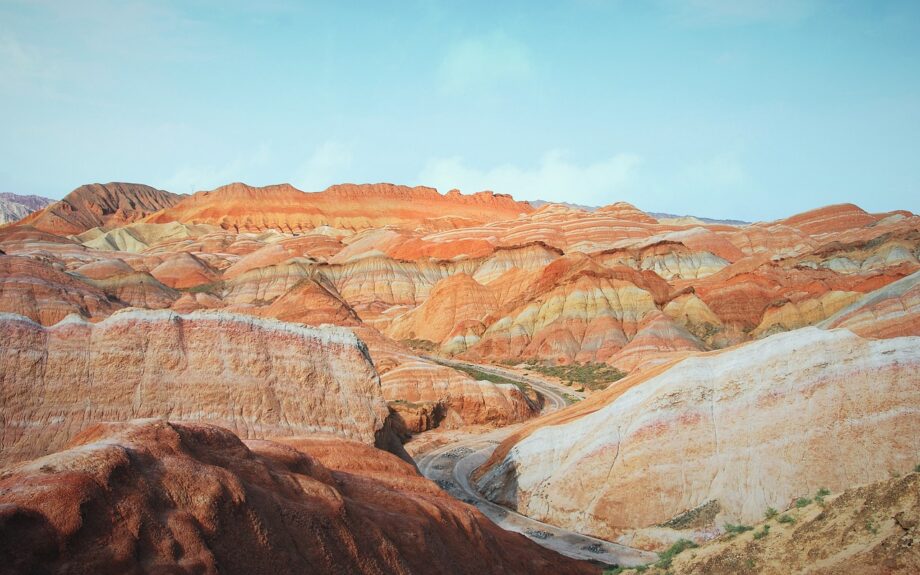
Travels in China
In Beijing, I didn’t take the full tour of the Forbidden City as it was relatively expensive and I’d rather be able to travel more often than see every tourist attraction in every destination I visit, but it’s still possible to walk around inside for free. And there’s a great park nearby that gives an elevated view of the whole complex, which was great (and also free).
From there, I made the not-to-be-missed visit to the Great Wall, which is well worth the trip. I also visited Shanghai, Hangzhou, Shenzhen, and Guangzhou (and the special administrative regions of Macau and Hong Kong).
China is an interesting destination in its own right (I loved my time there in 2017), but it’s also one of the best places to visit if you want to prioritize getting free nights in nice hotels.
By each getting a Marriott Bonvoy American Express Card, you and your travel buddy can get 17 hotel nights for just $120 total per person (or 8 nights if you’re traveling solo).
Eligible hotels are obviously not always close to the main tourist sites, but if you want to travel more cheaply, you can combine less touristy cities with visits to UNESCO World Heritage sites.
3. Germany (52 UNESCO World Heritage Sites)
Germany’s 2,000-year history has left many must-see attractions throughout the country. Germany is a country with so many incredible destinations to discover.
- Number of sites: 52
- Cultural: 49
- Natural: 3
- Mixed: 0
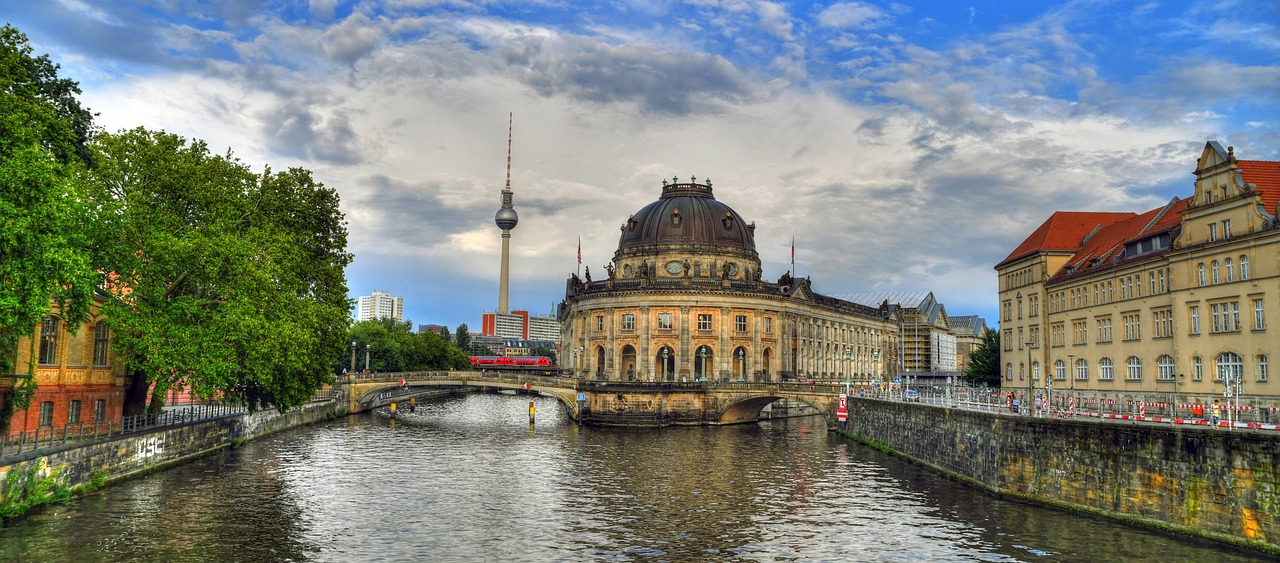
Some UNESCO sites in Germany
Here are just a few of the German sites on UNESCO’s World Heritage List:
- Berlin Museum Island
This UNESCO site includes the Pergamon Museum, the Bode Museum, the Museum of the Ancient World, the New Museum and the Ancient National Gallery.
- Roman monuments in Trier
Trier is considered by many to be Germany’s oldest city. Roman monuments such as St. Peter’s Cathedral and the Church of Our Lady offer fascinating insights into the Roman culture that dominated this country at the time.
- Upper Rhine Valley Middle
Also known as the Rhine Gorge, this valley stretches 40 km between Koblenz and Bingen. It has been recognized as a World Heritage Site for its unique blend of geological, historical, and cultural elements.
- Cologne Cathedral
Over 6 million people visit Cologne Cathedral every year. It’s Europe’s largest and most charming Gothic church, with 509 steps leading up to a platform offering breathtaking views of the Rhine. The immensity of the cathedral really blew me away.
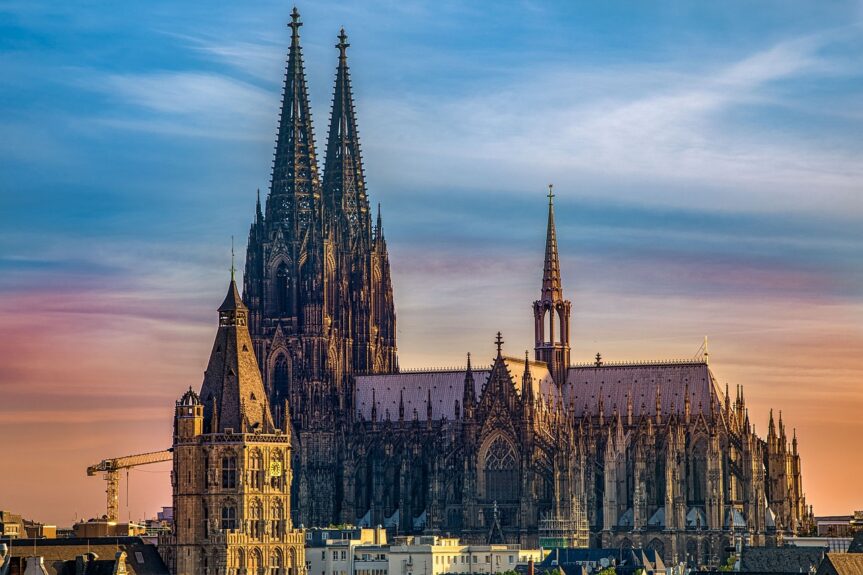
Travels in Germany
We went to Cologne on one of our Flytrippers trips, and believe me: seeing Cologne Cathedral is worth the trip. I almost couldn’t believe my eyes.
I haven’t yet visited other parts of the country for the same reasons as Italy, but I’m looking forward to it. Berlin, in particular, seems to me to be a very pleasant city, based on what all the travelers have told me.
You can read our guest blogger’s article about his month in Berlin.
4. France (52 UNESCO World Heritage Sites)
France is the most visited country in the world. Although most famous for its joie de vivre, exceptional culture, and food, the country is not lacking in architectural and technical prowess either.
- Number of sites: 52
- Cultural: 44
- Natural: 7
- Mixed: 1
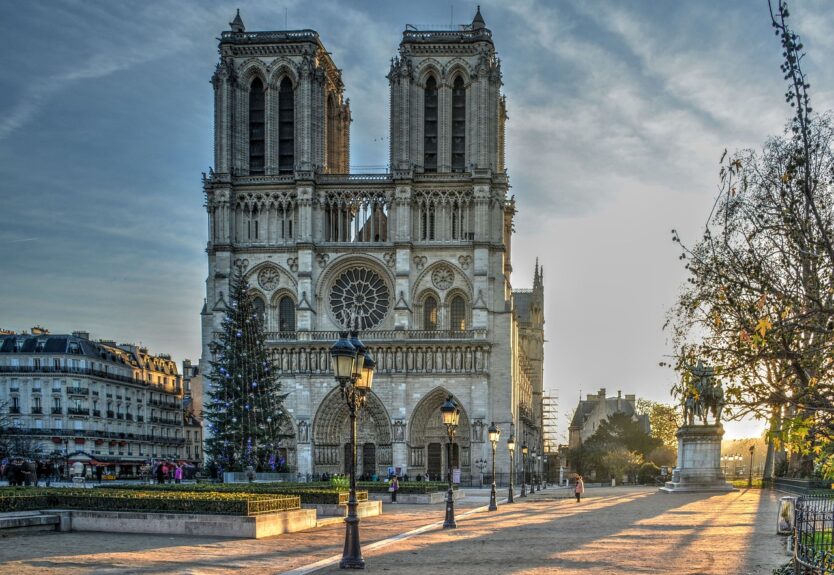
Some UNESCO sites in France
Here are just a few of the French sites on UNESCO’s World Heritage List:
- Notre-Dame Cathedral
Built over 900 years ago, the magnificent Gothic cathedral of Notre Dame is France’s most visited monument. It is famous for having one of the world’s largest organs and enormous church bells. Recently, it suffered a devastating fire.
- Versailles Palace and Park
The Royal Palace of Versailles was built in the 17th century and was considered a symbol of French absolute monarchy. It is also renowned for the elaborate embellishments of sculptures, decorations, and exceptional landscaping of the park.
- The Gulf of Porto
One of Corsica’s most beautiful regions, the Gulf of Porto is packed with nature reserves and breathtaking scenery. The red granite cliffs of Piana and the calanques of the Girolata peninsula are just some of the natural attractions not to be missed on this magical island.
- Mont-Saint-Michel
This iconic island in the northwest is one of France’s most unforgettable and iconic monuments. There are many attractions well worth a visit — museums, fortresses, churches, and, of course, the glorious abbey at the top of the island.
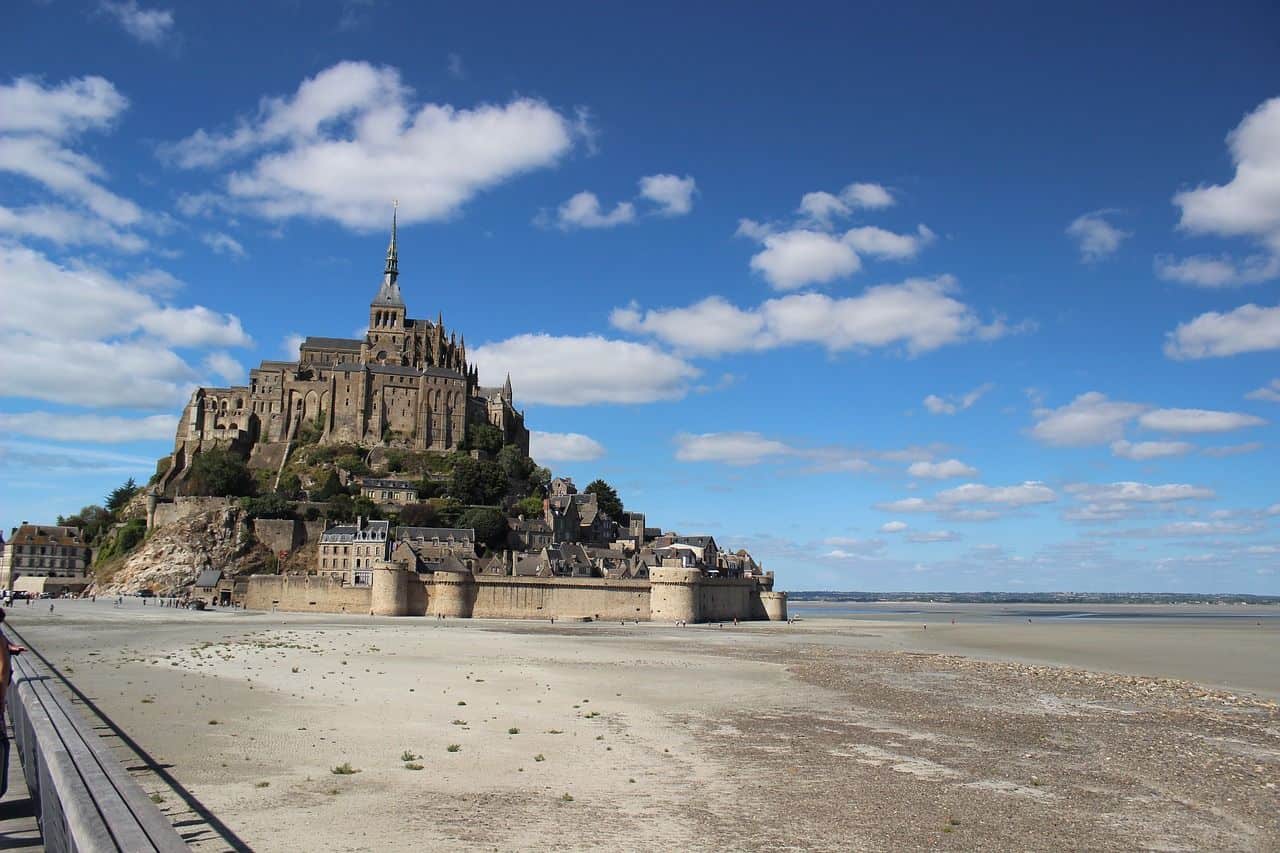
Travels in France
France’s many attractions are just one of the reasons why it’s the most visited country in the world. We’ll have an article up soon to show you some of the places to visit since it’s one of our readers’ favorite destinations.
Why combine Paris and the Canary Islands? Because tickets to Europe’s less popular destinations are often expensive when bought in one piece. It’s our multi-book itinerary technique: buy the cheapest ticket to Europe – in our case, to Paris – and combine it with a separate flight, it’s often quite a bit cheaper. It doesn’t always work, but it’s worth comparing to possibly save 50% like we did.
We were lucky enough to visit before the fire, on the same trip as the Canary Islands mentioned above, and while it’s obviously pretty, it’s a little less impressive than Cologne Cathedral in my opinion.
5. Spain (50 UNESCO World Heritage Sites)
Spain’s rich history and natural beauty are no secret to world travelers, so there are plenty of UNESCO World Heritage Sites in the Iberian Peninsula country.
- Number of sites: 50
- Cultural: 44
- Natural: 4
- Mixed: 2
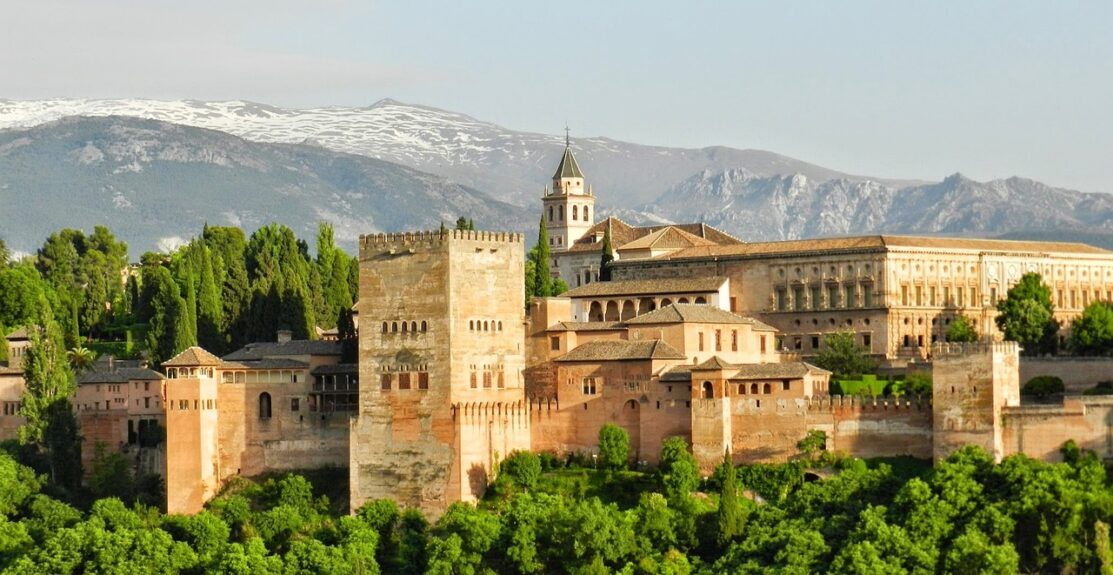
Some UNESCO sites in Spain
Here are just a few of the Spanish sites on UNESCO’s World Heritage List:
- Alhambra
This fortress was the residence of Moorish emirs in the 13th and 14th centuries. It is located in Grenada and attracts over 2 million visitors every year. It’s one of the most magnificent monuments I’ve ever seen.
- Alcala de Henares
Founded by Cardinal Jiménez de Cisneros, this charming city is the world’s first planned university town. Located just 30 km from Madrid, Alcala de Henares is home to a large complex of historic buildings. The most popular are the exceptional Colegio Mayor de San Idelfonso and the Monastery of San Bernardo.
- Teide National Park
Another site not found on the mainland, Teide National Park is located in Tenerife, one of the Canary Islands. It is breathtaking. It was one of my favorite hikes in the world.
- Ibiza
Ibiza’s parties are not (yet) protected by UNESCO. However, the island’s astonishing biodiversity of marine life and historic buildings are recognized as an important world heritage site.
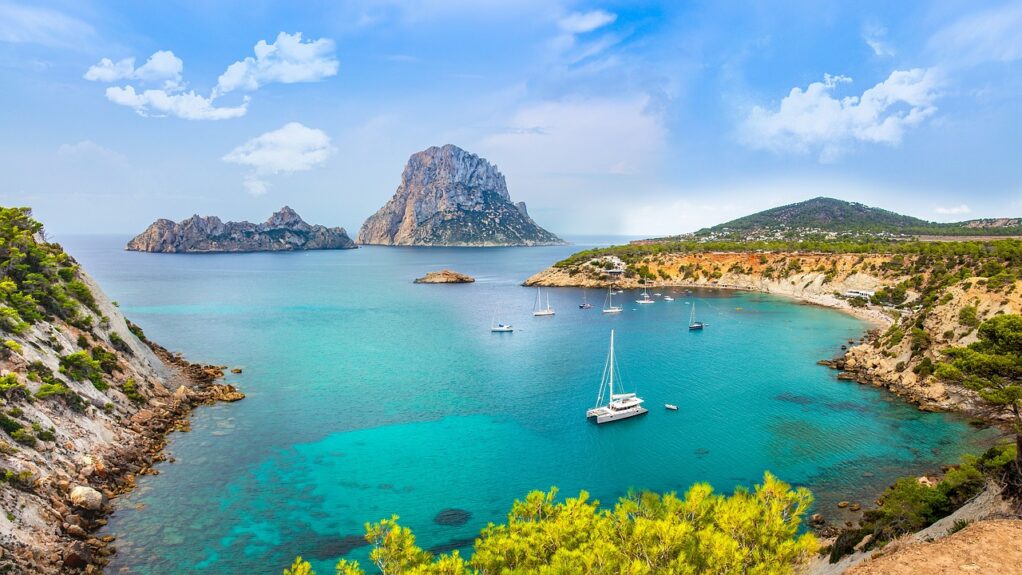
Travels in Spain
The 2 co-founders of Flytrippers, we visited 2 of the Canary Islands. We were lucky enough to take part in a sunset tour with the kind owner of Casa Zaguan Hotel on our trip there, and it was beautiful. Don’t miss our article about our trip to the Canary Islands soon.
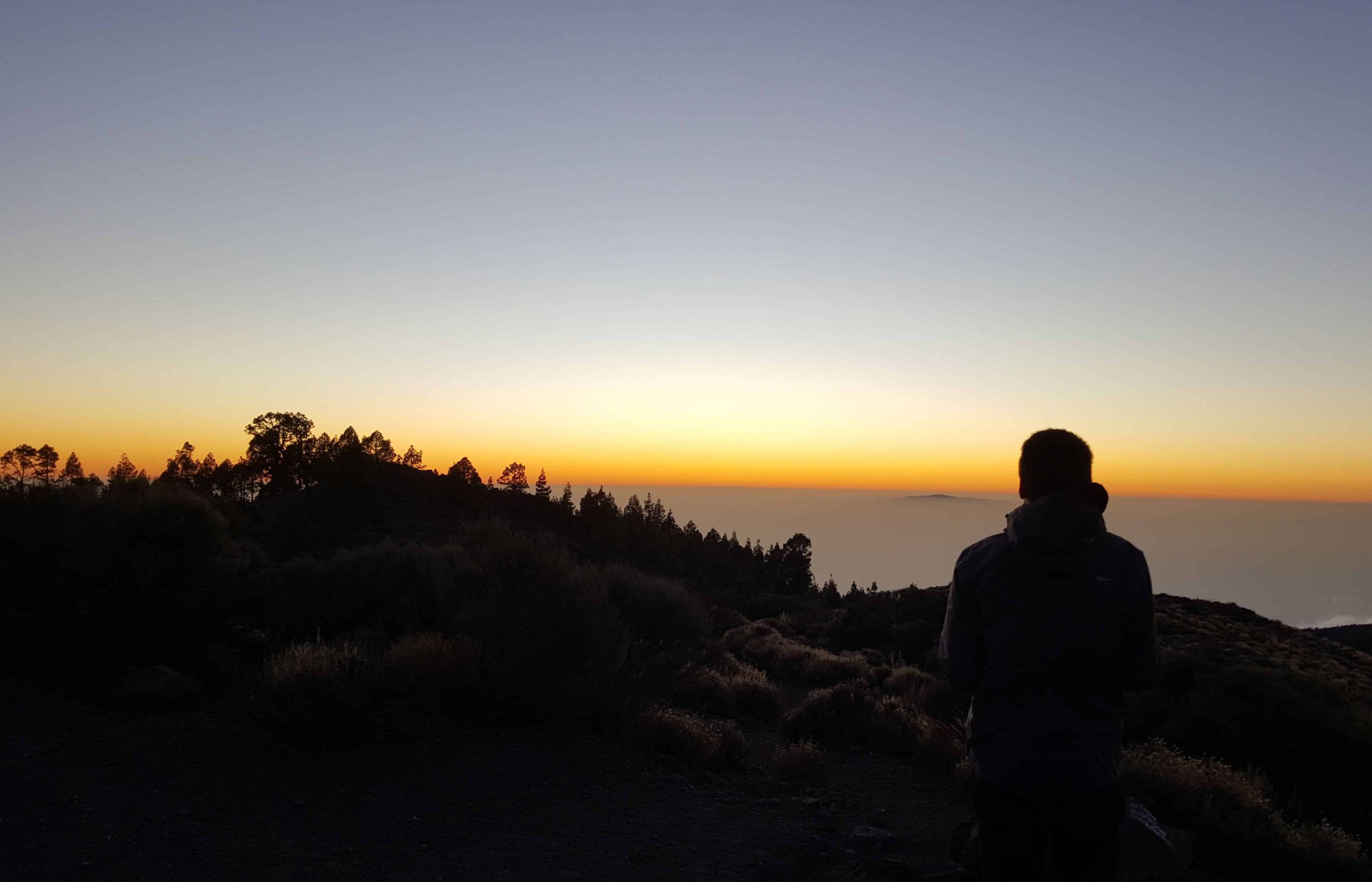
I also spent a few weeks exploring Madrid, Toledo, Grenada, Cordoba, Sevilla, and so on. Again, it’s a fantastic destination (the 2nd most visited country in the world), but it’s also the best place to visit in Europe for free hotel nights. It’s why I went.
As in China, you can redeem your 17 free nights in smaller (just as beautiful) authentic Spanish towns and visit some of the popular sites before or after to reduce the cost of your trip.
6. India (42 UNESCO World Heritage sites)
Wherever you go in this incredible country, you’ll come across breathtaking sites and breathtaking views. India has a total of 42 UNESCO sites, including 7 natural sites, 34 cultural sites, and one mixed site.
- Number of sites: 42
- Cultural: 34
- Natural: 7
- Mixed: 1
We sometimes spot really good deals to India and I’m really looking forward to discovering the country: it looks incredible, it’s very affordable and it’s one of the best places to get lots of free nights thanks to Marriott Points.
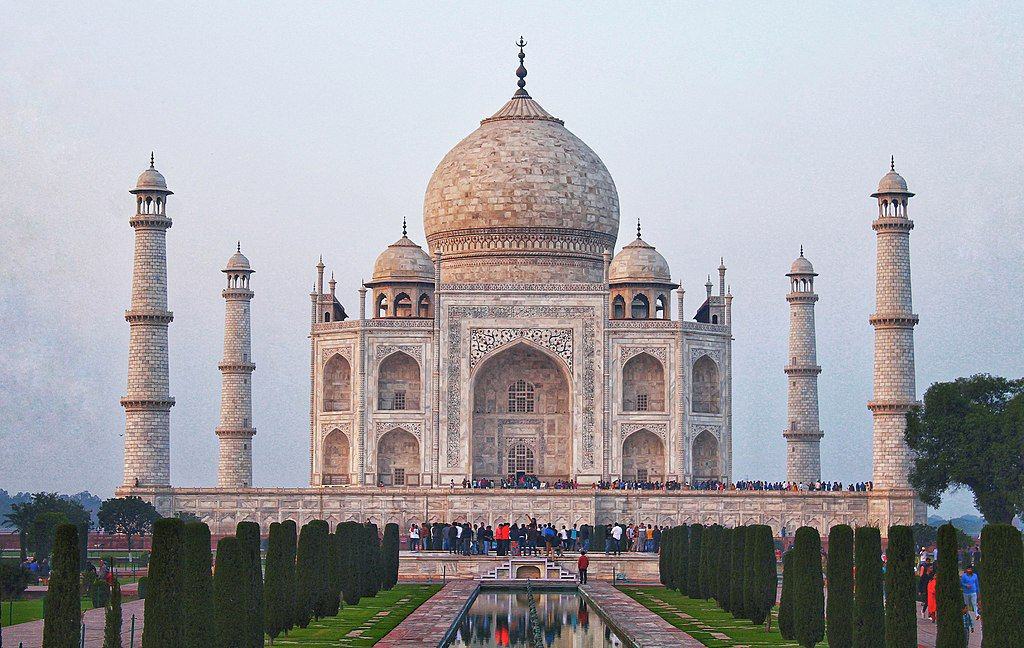
Some UNESCO sites in India
Here are a few Indian sites on UNESCO’s World Heritage List:
- Taj Mahal
The Taj Mahal is widely famous, and with good reason. It was built by Emperor Shah Jahan in memory of his wife and stands on an enchanting site near the Yamuna River in Agra. What’s more, this piece of white marble Mughal architecture is also recognized as one of the Seven Wonders of the World.
- Khajuraho
A testament to India’s rich cultural heritage, Khajuraho is an extremely important UNESCO site. It’s a complex of Hindu and Jain temples in the Chhatarpur district. The temples are most famous for their Nagara-style rock-cut monuments, erotic paintings, and richly decorated frescoes.
- Nanda Devi and Valley of Flowers National Parks
Located in the western Himalayas, these parks are home to many endemic alpine flowers and exotic animals such as blue sheep, snow leopards, and Asiatic black bears.
- Bodh Gaya, Bihar
Bodh Gaya is an extremely important religious site and place of pilgrimage. More specifically, it is believed to be the place where Buddha found enlightenment. It is located on the banks of the Niranjana river, in south-western Bihar.
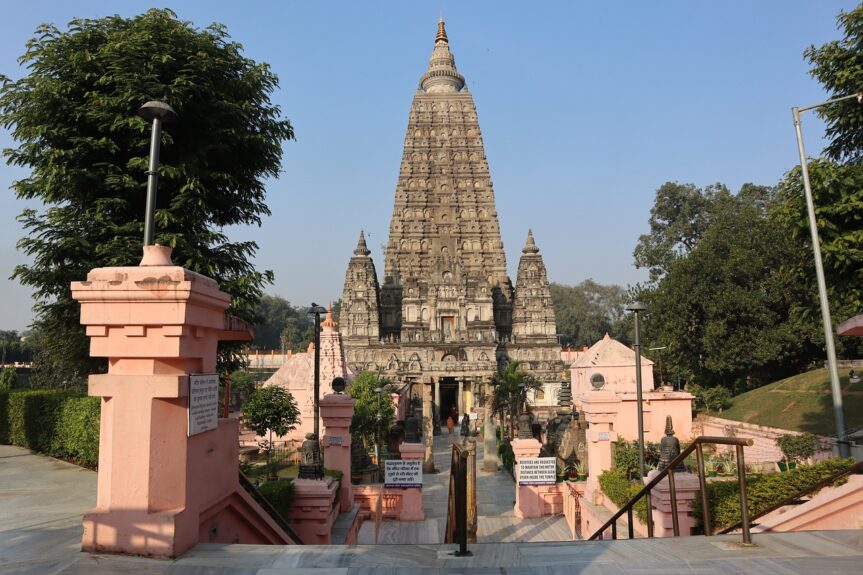
Travels in India
7. Mexico (35 UNESCO World Heritage Sites)
With 35 sites of outstanding universal value, Mexico ranks 7th on the list of countries with the most UNESCO sites.
- Number of sites: 35
- Cultural: 27
- Natural: 6
- Mixed: 2
I’m currently in Panama and Mexico is a destination I’m considering for my next stop, as there are many beautiful places to see if you get out of the resort areas and explore. Some of the country’s cities also have a choice of Category 1 Marriott hotels. We regularly find deals in the $300s roundtrip to this country so close to home.

Some UNESCO sites in Mexico
Here are just a few of the Mexican sites on UNESCO’s World Heritage List:
- Chichen Itza
Built by the Maya during the Terminal Classic period, the ancient city of Chichen Itza is also recognized as one of the New Wonders of the World. Main attractions include the sacred temple of El Castillo, the Temple of the Warriors, the Hall of a Thousand Columns, the Tomb of Chacmool, and the Tomb of the High Priest.
- Teotihuacan
Another of Mexico’s remarkable ancient holy cities – Teotihuacan is a vast Pre-Columbian site famous for the magnificent Avenue of the Dead, the Pyramid of the Moon, and the Pyramid of the Sun.
- Mexico City’s historic center and Xochimilco
Built by the Spanish on the ruins of Tenochtitlan — the capital of the Aztec empire — Mexico City is one of the world’s largest and most populous cities. Among the main attractions in the historic center, you’ll find 5 Aztec temples, the cathedral (the largest on the continent), and the Palacio de las Bellas Artes. You can sometimes get a nice long stopover in Mexico City on some deals to Central or South America, which is great if you like to travel or discover new places. I did this 2 years ago on my way to Colombia (what to do on a long stopover in Mexico City) and the other co-founder of Flytrippers Andrew did the same thing on his way to Peru a few days later.
- Ancient Mayan city and Calakmul rainforest
Located in southern Mexico, this site contains the most abundant archaeological remains of the important Mayan city of Calakmul. Set in the heart of the Tierras Bajas rainforests, it is a place where archaeology and ecology come together in perfect harmony.
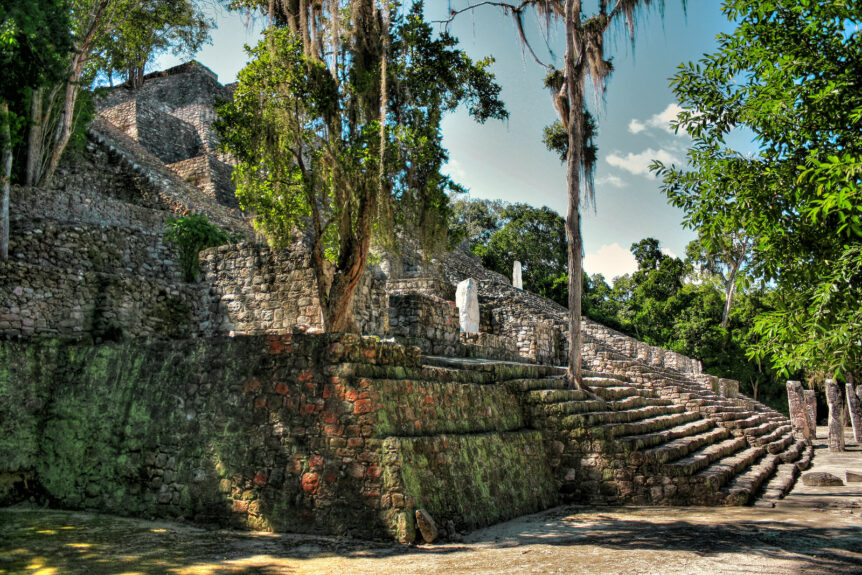
Travels in Mexico
8. United Kingdom (33 UNESCO World Heritage Sites)
The UK has 33 World Heritage Sites including fantastic coastlines, spectacular bridges, and uninhabited islands. Twenty-nine of these are located on the main British Isles and three are in its many overseas territories.
- Number of sites: 33
- Cultural: 28
- Natural: 4
- Mixed: 1
Since the end of WOW Air, flights to the UK are sometimes a little more expensive, but if you can’t find any deals, you can sometimes combine a deal to Europe with cheap intra-European flights and in addition, see 2 countries.
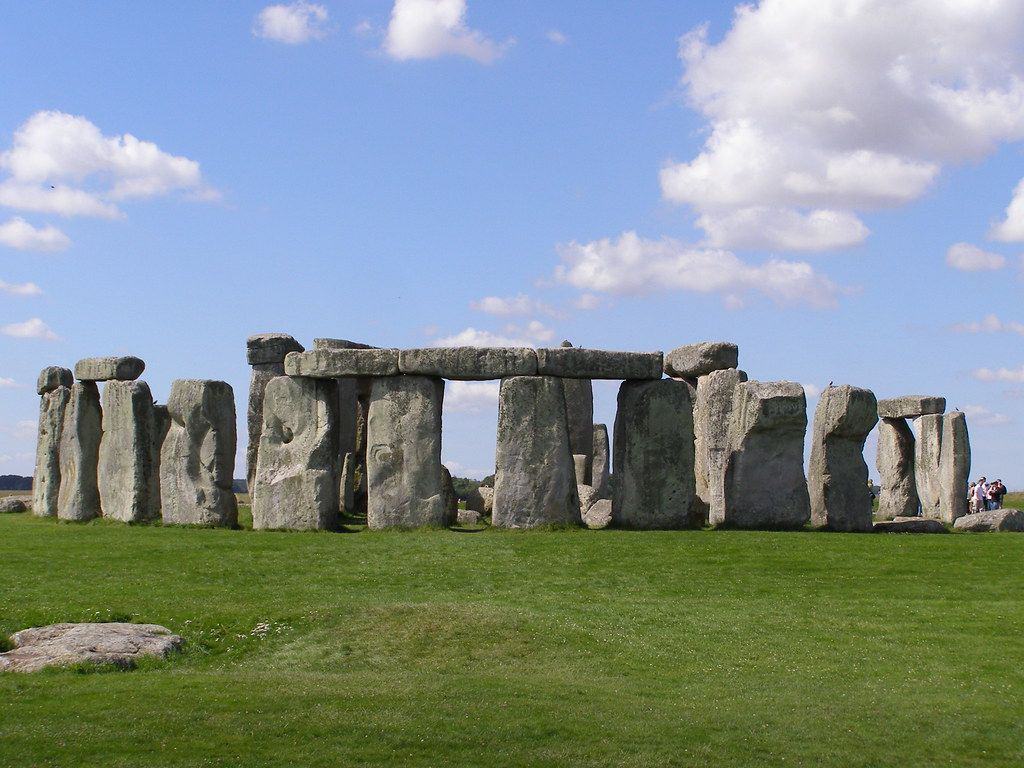
Some UNESCO sites in the UK
Here are just a few of the sites on UNESCO’s World Heritage List:
- Stonehenge, Avebury, and Associated Sites
Probably the most famous groups of megaliths, these two sanctuaries are an incomparable legacy of prehistory. Stonehenge is the most sophisticated and Avebury is the world’s largest stone circle.
- Forth Bridge
Here’s one I had to include as a civil engineer. Located in Scotland, this innovative bridge was added to the list in 2015. Inaugurated in 1890, the Forth Bridge was the first multi-span cantilever bridge. Today, at 2,529 m, it’s still one of the longest in the world.
- Canterbury Cathedral, St Augustine’s Abbey and St Martin’s Church
For almost 500 years, Canterbury was the seat of the head of the Anglican Church. St. Martin’s Church, also the oldest church in England, and St. Augustine’s Abbey are associated with the spread of Christianity in the Anglo-Saxon kingdoms.
- Dorset and East Devon Coast
The Dorset and East Devon coast is a mixture of geological, paleontological, and geomorphological rock formations and fossils. It has been of incredible value to the study of earth sciences. It is located in southern England and is divided into eight sections.
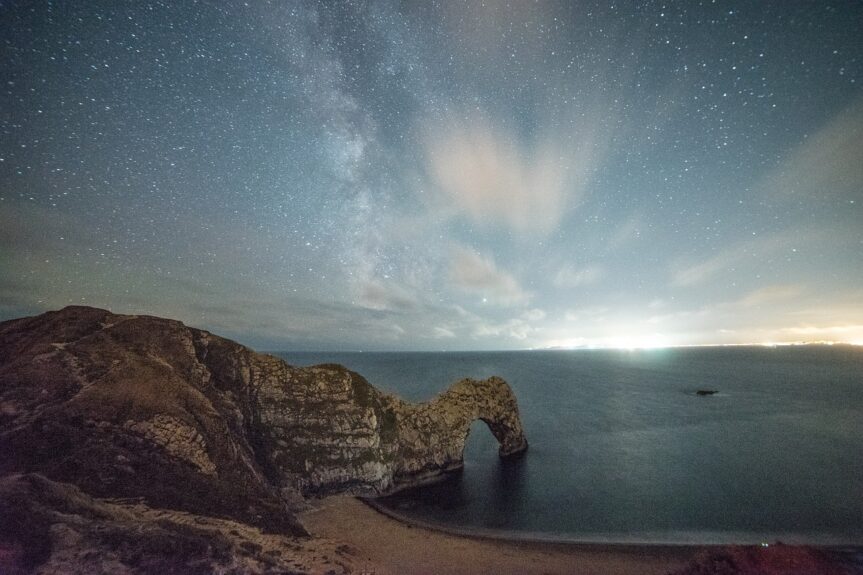
Travels in the United Kingdom
9. Russia (31 UNESCO World Heritage Sites)
Russia’s breathtaking nature has resulted in 11 UNESCO natural sites and its rich history has provided 20 fascinating cultural sites.
- Number of sites: 31
- Cultural: 20
- Natural: 11
- Mixed: 0
Russia is definitely on my bucket list, and hopefully, one day visa requirements will be relaxed to make it a bit more affordable for budget travelers like us. We sometimes spot deals to Moscow for under $1,000, but it’s not very frequent.

Some UNESCO sites in Russia
Here are a few Russian sites on UNESCO’s World Heritage List:
- Red Square and the Kremlin
Former residence of the Grand Prince and religious center, the Kremlin is the oldest part of Moscow. St. Basil’s Basilica on Red Square is considered one of the world’s most beautiful Orthodox cathedrals.
- Saint Petersburg
The historic center of St. Petersburg, one of the world’s largest UNESCO sites, is the result of a vast urban project begun in 1703. The main attractions include the Admiralty, the Winter Palace, the Marble Palace, and the Hermitage. It’s a pro tip for visiting Russia without a visa: a cruise to St. Petersburg.
- Wrangel Island
Located in the Arctic Ocean, this isolated island is considered one of the world’s least accessible nature reserves. It is known for the highest biodiversity in the High Arctic and as the last home of the woolly mammoth.
- Lake Baikal
Lake Baikal is located in southern Siberia. It’s the world’s largest lake (by volume of water), being larger than all the Great Lakes combined, and the deepest. Many consider it the world’s oldest and cleanest lake.
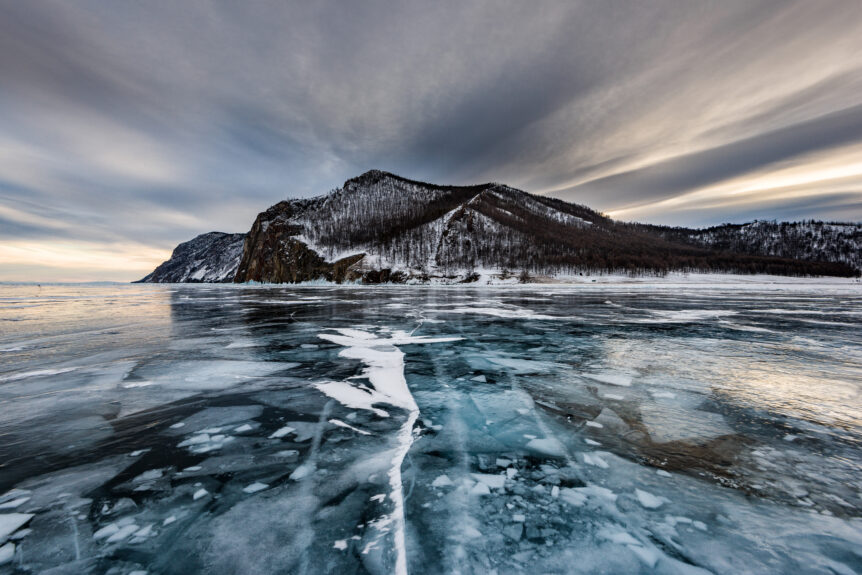
10. Iran (27 UNESCO World Heritage Sites)
With 2 natural sites and 27 cultural sites, Iran ranks 10th on the list of countries with the most UNESCO sites.
- Number of sites: 27
- Cultural: 25
- Natural: 2
- Mixed: 0
Another country we’ve long been passionate about and can’t wait to visit, Iran is a complicated country for Canadians as it requires a guide or local host, making it very expensive for budget travelers. But it looks like a wonderful country.
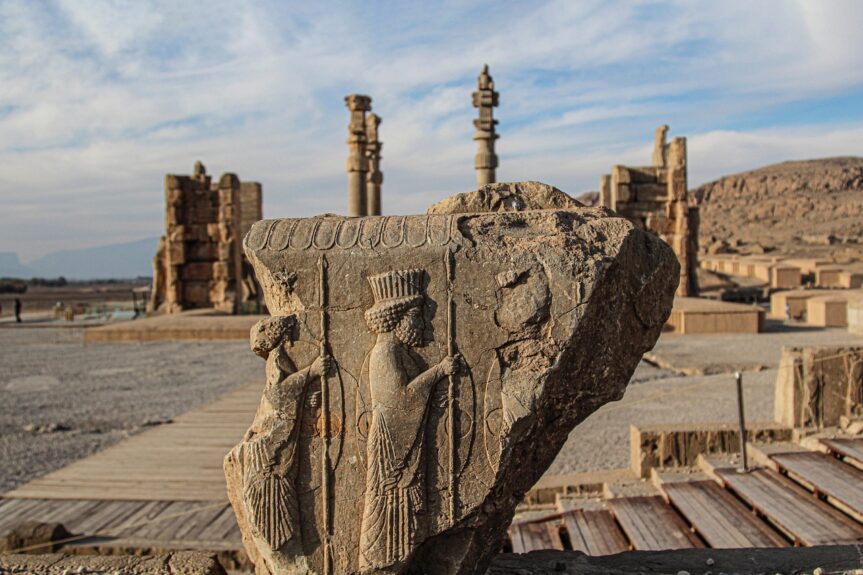
Some UNESCO sites in Iran
Here are a few Iranian sites on UNESCO’s World Heritage List:
- Persépolis
Located 60 km northeast of Shiraz, the capital of the Achaemenid Empire of Persia, Persepolis represents one of the most magnificent architectural complexes in the ancient world. The remains of the city – after it was burnt down by Alexander the Great – are a symbol of the first welcoming culture of cultural and ethnic diversity.
- Hyrcanian forests
The remarkable floristic biodiversity of the Hyrcanian forests has recently been recognized as a world heritage site. The Hyrcanian forests stretch for 850 km along the southern coast of the Caspian Sea and are thought to date back 25 to 50 million years.
- Bam
This ancient desert city and its citadel look like a giant sand castle. Unfortunately, a major earthquake hit the region and destroyed the city in 2003, also killing tens of thousands. It’s a reminder to see as much of the world as we can as quickly as possible!
- Isfahan Masjed-e Jame
Masjed-e Jame, also known as the Friday Mosque, is located in downtown Esfahan. Construction began in 841 and lasted over 12 centuries. The mosque is therefore a fine representation of the development of mosque architecture.
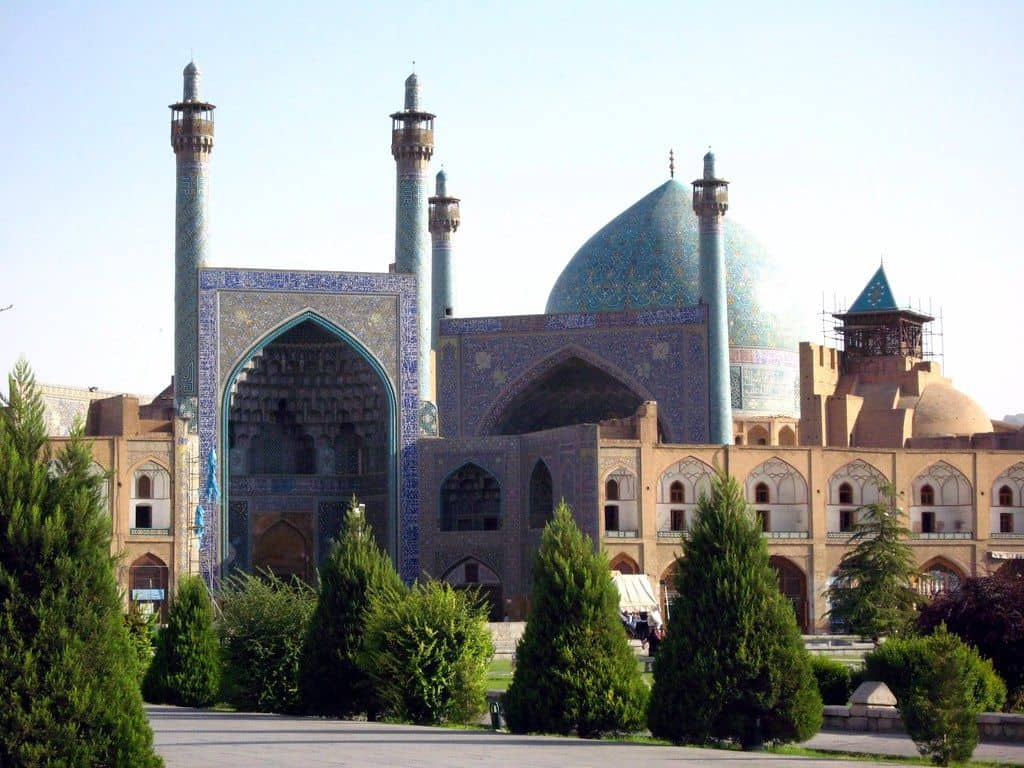
11.United States (25 UNESCO World Heritage Sites)
The USA is home to 25 stunning World Heritage Sites — including 12 natural sites, 11 cultural sites, and one mixed site.
- Number of sites: 25
- Cultural: 12
- Natural: 12
- Mixed: 1
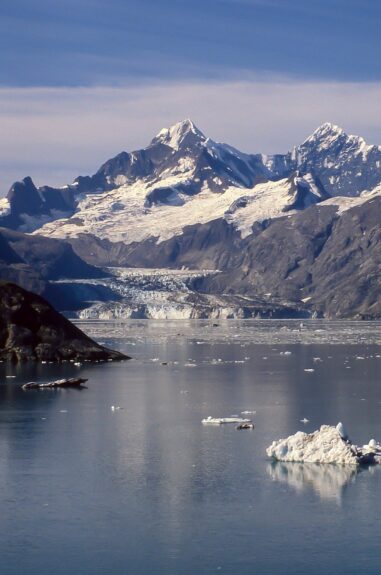
Some UNESCO sites in the United States
Here are just a few of the American sites on UNESCO’s World Heritage List:
- Glacier Bay National Park
With over 3.3 million acres of rocky mountains, rugged coastline, dynamic fjords, and incredible glaciers, the park is a natural wonder. It is located in Alaska and is only accessible by boat or plane.
- Independence Hall
The place where the Declaration of Independence was adopted, Independence Hall is one of the most remarkable attractions in the United States. It is located in the heart of Philadelphia, a city considered by many to be the birthplace of the United States.
- Taos Pueblo
A rare and exceptional example of traditional Native American architecture, Taos Pueblo is located in the Rio Grande Valley.
- Grand Canyon National Park
Another World Heritage Site, the Grand Canyon is one of the most iconic places in the United States. This geological spectacle is the result of over 6 million years of erosion. Today, the Grand Canyon also offers many opportunities for visitors, such as hiking, horseback riding, and rafting. I enjoyed our road trip there with Andrew on one of our first Flytrippers co-founder trips several years ago. He was lucky enough to return to the lovely state of Arizona and recommends this destination to all road trip trippers!
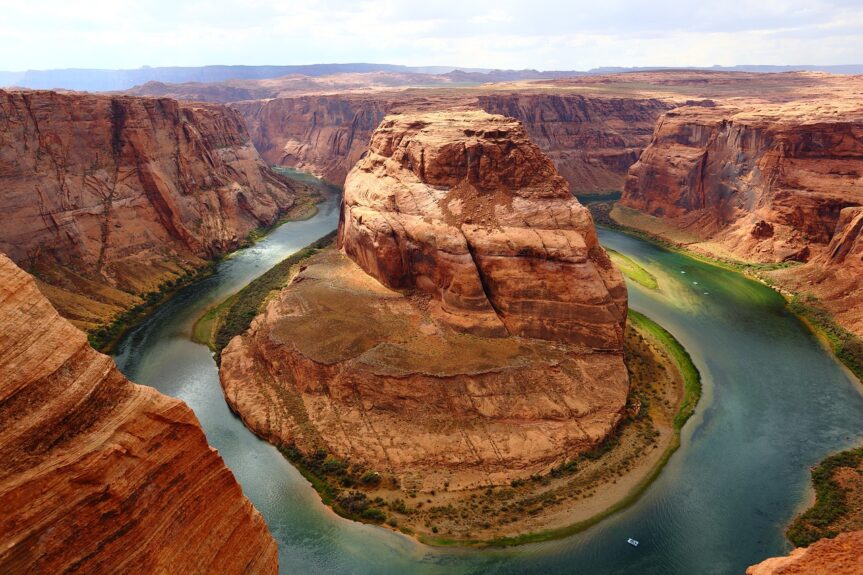
Travels in the United States
12. Japan (25 UNESCO World Heritage Sites)
There are a total of 25 World Heritage Sites in Japan. Four are natural, 19 are cultural, but all are extremely beautiful.
- Number of sites: 25
- Cultural: 20
- Natural: 5
- Mixed: 0
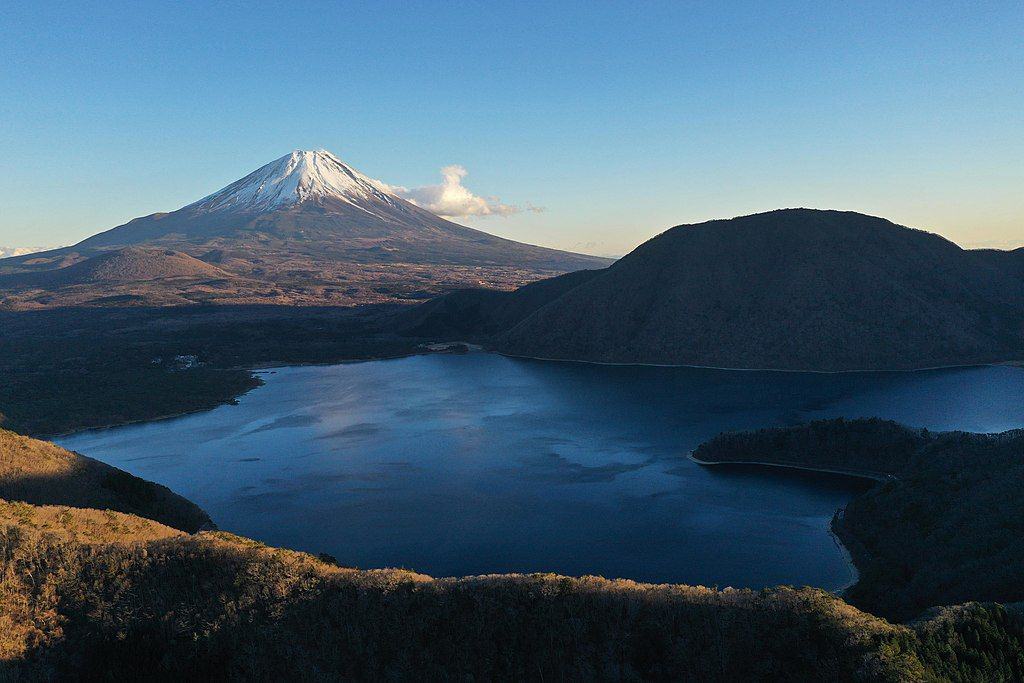
Some UNESCO sites in Japan
Here are a few Japanese sites on UNESCO’s World Heritage List:
- Mont Fuji
Japan’s most emblematic symbol, Mount Fuji is a sacred site and a formidable source of inspiration for many artists.
- Historic Monuments of the Ancient City of Kyoto
This cultural site comprises 17 monuments located around the historic city of Kyoto. The most popular among them are Kinkakuji, Ginkakuji, and Nijō Castle.
- Shirakawa-go and Gokayama
Recognized as a UNESCO site in 1995, Shirakawa-go and Gokayama are renowned for their traditional mountain farms built in the gassho-zukuri style.
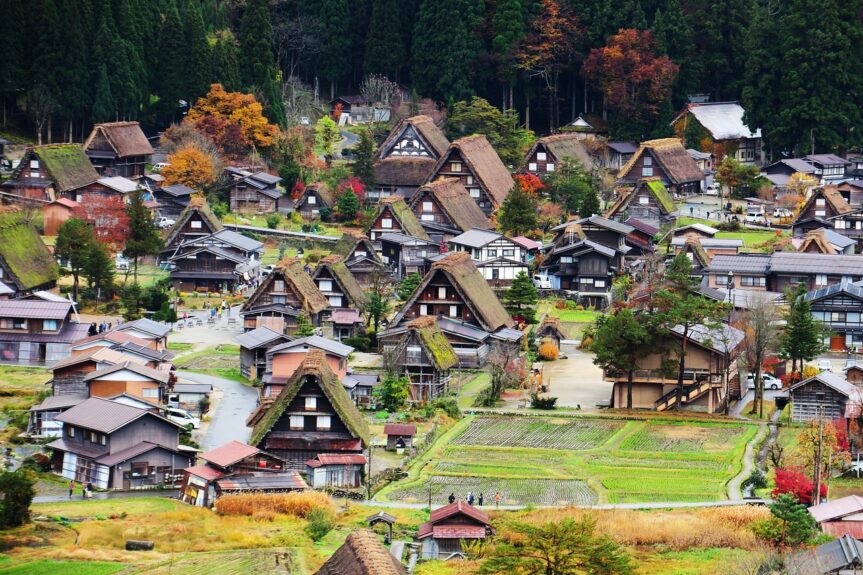
Travels in Japan
13. Brazil (23 UNESCO World Heritage Sites)
Brazil is home to 7 natural sites, 15 cultural sites, and one mixed UNESCO World Heritage Site.
- Number of sites: 23
- Cultural: 15
- Natural: 7
- Mixed: 1
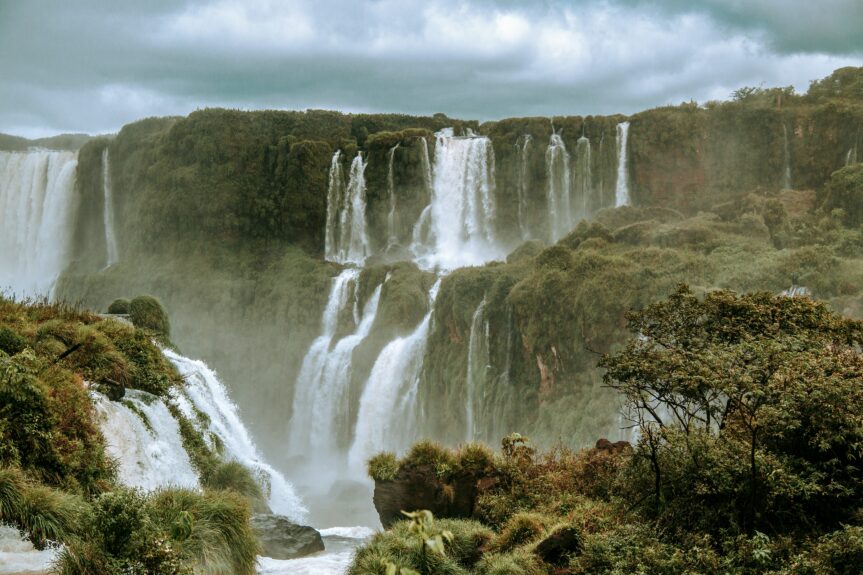
Some UNESCO sites in Brazil
Here are a few Brazilian sites on UNESCO’s World Heritage List:
- Iguaçu National Park
Home to the world’s widest waterfalls and many rare species, Iguaçu National Park is a remarkable natural site that’s a must-see. You can read our article on the world’s best waterfalls.
- The Amazon Rainforest
Also known as the “lungs of the earth”, the Amazon rainforest is an extremely important ecosystem. It covers 5.5 million square kilometers and includes a wide variety of landscapes and wildlife.
- Salvador
Salvador was Brazil’s very first capital. Today, the city is home to many exceptional Renaissance buildings and brightly-colored houses.
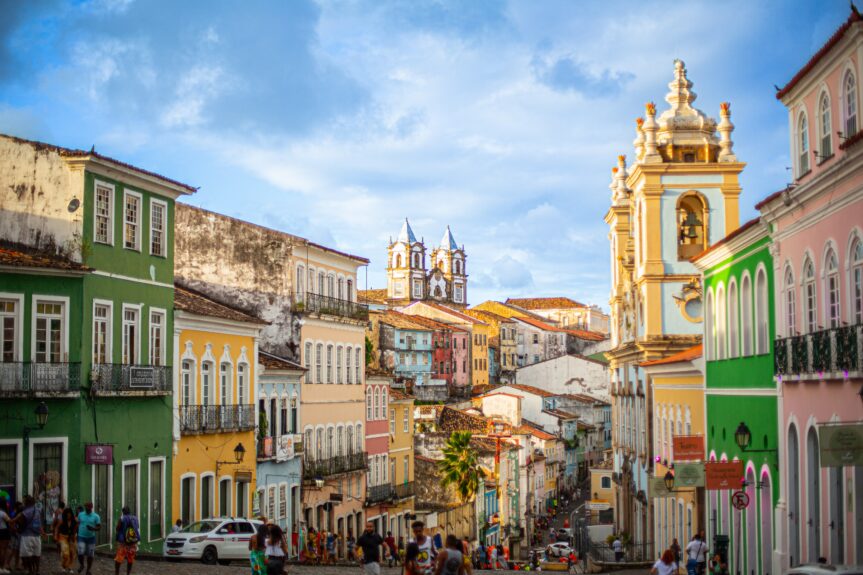
Travels in Brazil
14. Canada (22 UNESCO World Heritage Sites)
Canada is a country of many natural wonders and 22 amazing UNESCO World Heritage Sites. Ten of these sites are natural, nine are cultural, and one is mixed. You can also read our article with 3 photos from each province that will make you want to explore Canada.
- Number of sites: 22
- Cultural: 10
- Natural: 11
- Mixed: 1
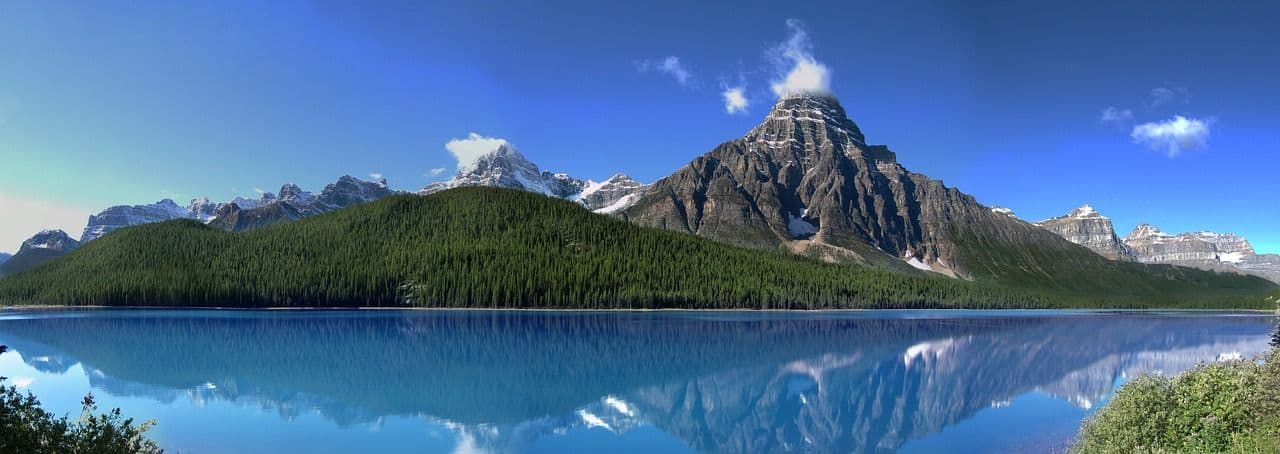
Some UNESCO sites in Canada
Here are a few Canadian sites on UNESCO’s World Heritage List:
- Canadian Rocky Mountain Parks
One of Canada’s most remarkable sites, the Rocky Mountain Parks includes 7 parks with impressive peaks, glaciers, waterfalls, caves, and striking mountain scenery. I’ve lived in the West for several months and it’s clearly one of my favorite places in the world.
- Gros Morne National Park
Located in Newfoundland, it is one of the country’s hidden gems and one of the highlights of any trip to this amazing island.
- Wood Buffalo National Park
The park is home to the largest population of wild bison in North America. It is located in northern Alberta and was recognized as a Natural World Heritage Site in 1983.
- Old Québec
The historic district is a unique example of an American colonial walled city (the continent) north of Mexico City.
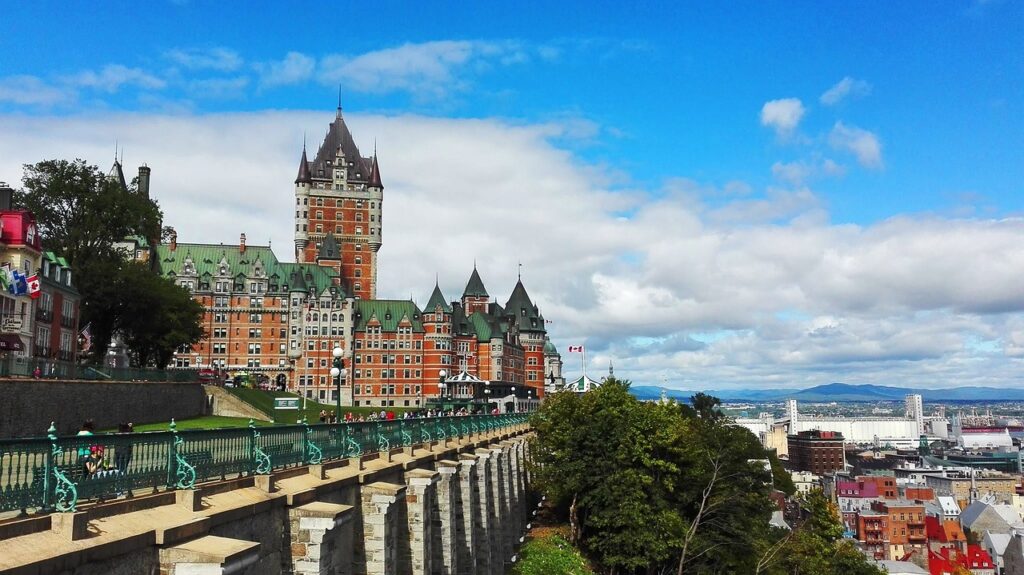
Travels in Canada
15. Australia (20 UNESCO World Heritage Sites)
Australia is the land of sun, sand, and diverse landscapes. It is home to 20 World Heritage Sites.
- Number of sites: 20
- Cultural: 4
- Natural: 12
- Mixed: 4
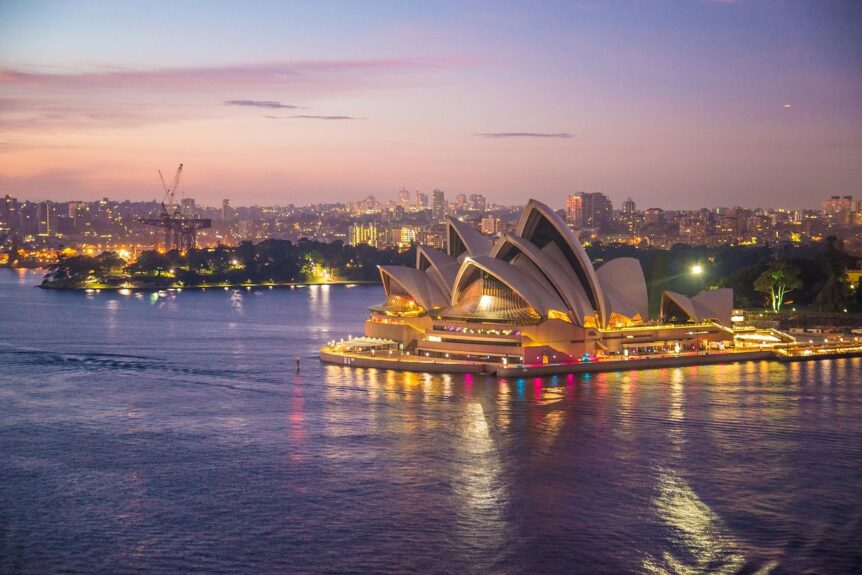
Some UNESCO sites in Australia
Here are a few Australian sites on the UNESCO World Heritage List:
- Sydney Opera House
Visited by over 4 million people every year, this architectural masterpiece is an exceptional blend of creativity and innovation. Designed by Danish architect Jorn Utzon, it was recognized as a cultural heritage site in 2007.
- Great Barrier Reef
The Great Barrier Reef is the world’s largest coral reef ecosystem, with over 2,500 individual reefs, 1,500 species of fish, and 900 tropical islands.
- Purnululu National Park
Purnululu National Park is located in the Kimberley region of Western Australia. It is very popular for the relief of the Bungle Bungle Range, which comprises quartz sandstone eroded over more than 20 million years.
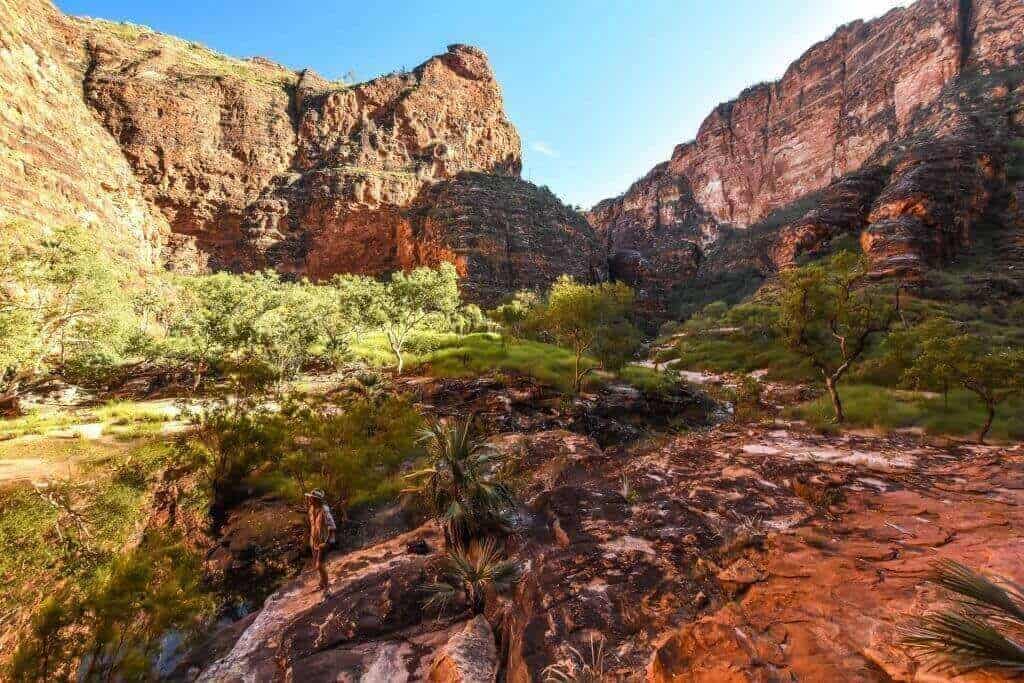
Travels in Australia
Bonus: Greece and Türkiye
We like to give you more for your money at Flytrippers, so we’re adding this bonus.
With 16 UNESCO World Heritage Sites each, neighboring countries and historic rivals Greece and Türkiye share 16th place on the prestigious list. The rich history of these countries has given rise to some of the world’s must-see attractions.
UNESCO sites in Greece include the Acropolis, the archaeological site of Delphi, the archaeological site of Olympia, Meteora, Delos, and Rhodes. You can read several articles about Greece if you’re interested in this destination. I really enjoyed my trip there.
But not as much as my trip to Türkiye.
Pamukkale, the Selimiye Mosque, Göreme National Park, Cappadocia, Hierapolis, and the historic center of Istanbul are among the main UNESCO sites in Türkiye. It’s one of my favorite of the dozens of countries I’ve visited.


Want to get more content to (discover awesome destinations/learn about TOPIC)?
Summary
Visiting a UNESCO World Heritage means witnessing the most exceptional examples of our shared human and natural heritage and choosing one of these 15 countries is a great way to see amazing places. One lifetime is not enough to visit all the fantastic places on our diverse planet, but, hey — let’s do our best!
What would you like to know about these UNESCO World Heritage Sites? Tell us in the comments below.
See the deals we spot: Cheap flights
Explore awesome destinations: Travel inspiration
Learn pro tricks: Travel tips
Discover free travel: Travel rewards
Featured image: Rome’s Colosseo (photo credit: Willian West)

